One of the biggest problems currently facing the Internet of Things (IoT) devices market is its high fragmentation. The multitude of devices and communication protocols makes it very difficult to build a uniform and functional system if you decide to use components from different manufacturers.
There are many reasons for this, and they are not always solely related to the designers' desire to push through their own licensed solutions. The term IoT covers many types of devices. These could be, for example, small measurement sensors powered by alternative energy sources and requiring small amounts of data exchange over long distances, but also remote cameras transmitting high-resolution images in real time. Thus, the specificity of the designed device forces the designers to select the appropriate wireless communication technology, adequate to the requirements of the designed device. You must consider, among other things, battery life, communication range or amount of data transferred. Responding to the needs of the market, manufacturers of development kits (inclusing the Arduino platform) made sure that their portfolio covers the needs of IoT device designers to the fullest extent possible. In this article we present a brief overview of selected Arduino development kits from the MKR family, prepared for rapid prototyping of IoT devices using wireless communication in standards such as WiFi/Bluetooth, LoRaWAN/Sigfox, GSM/3G, or NB-IoT.
WiFi/Bluetooth communication with Arduino MKR 1000/1010
Communication in the ISM 2.4 GHz band, using WiFi and Bluetooth standards, has been on the IoT device market for several years. For the rapid implementation of hardware and software prototypes using WiFi communication, Arduino has developed the Arduino MKR WiFi 1000 and MKR WiFi 1010 development kits. The former is based on the ATSAMW25 module, containing the SAMD21 microcontroller, WINC1500 radio path and the ECC508 authentication chip. The MKR 1010 kit is fitted with the NINA-W102 radio module from u-blox, which offers Bluetooth/BLE communication.

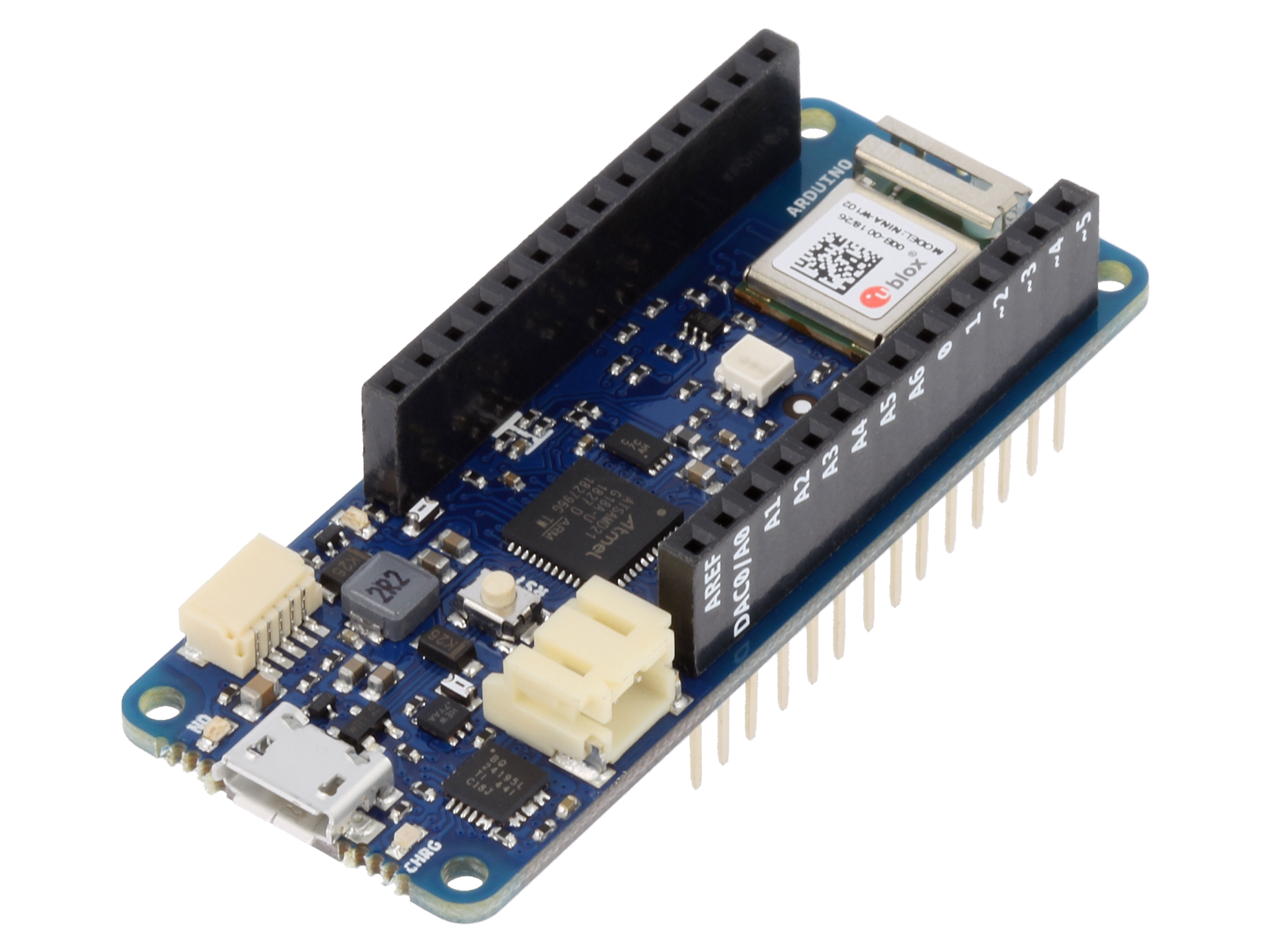
Figures 1 and 2. Arduino modules MKR WAN 1000 (left) and MKR WAN 1010 (right).
On the software side, Arduino provides the WiFi101 library, supporting WEP and WPA2 Personal encryption, for the MKR WiFi 1000 modules. For the MKR WiFi 1010 module (and other kits based on the u-blox NINA-W102 module, including Arduino NANO 33 IoT) the manufacturer has prepared the WiFiNINA library, as well as a number of sample applications demonstrating integration with Android IoT Cloud and Azure, AWS IoT Core, Google Firebase, or Blynk.
LoRaWAN and Sigfox communication - Arduino MKR WAN 13x0 and FOX 1200 modules
The rapid development of IoT systems has resulted in an increased interest in the subject of smart cities. Unfortunately, WiFi/Bluetooth/BLE standards are used over short distances and does not meet all the requirements set for "Smart City" projects (which include, among others, extensive networks of pollution sensors, water level monitoring sensors, or parking lot sensors). The solution to these problems may be the use of one of the two most popular communication standards in the LPWAN (Low Power Wide Area Network) area - LoRaWAN or Sigfox, which enable small amounts of data to be transmitted over long distances. For the rapid prototyping of devices using LoRa/LoRaWAN, communication, Arduino designers have prepared MKR WAN 1300 development kit, and its successor MKR WAN 1310. Both modules are based on the Atmel SAMD21 microcontroller, used in other Arduino MKR series modules, and the Murata CMWX1ZZABZ radio module. The newer version of the module is additionally equipped with 2MB of Flash memory, a new battery charging circuit and low-power optimised power supply circuits.
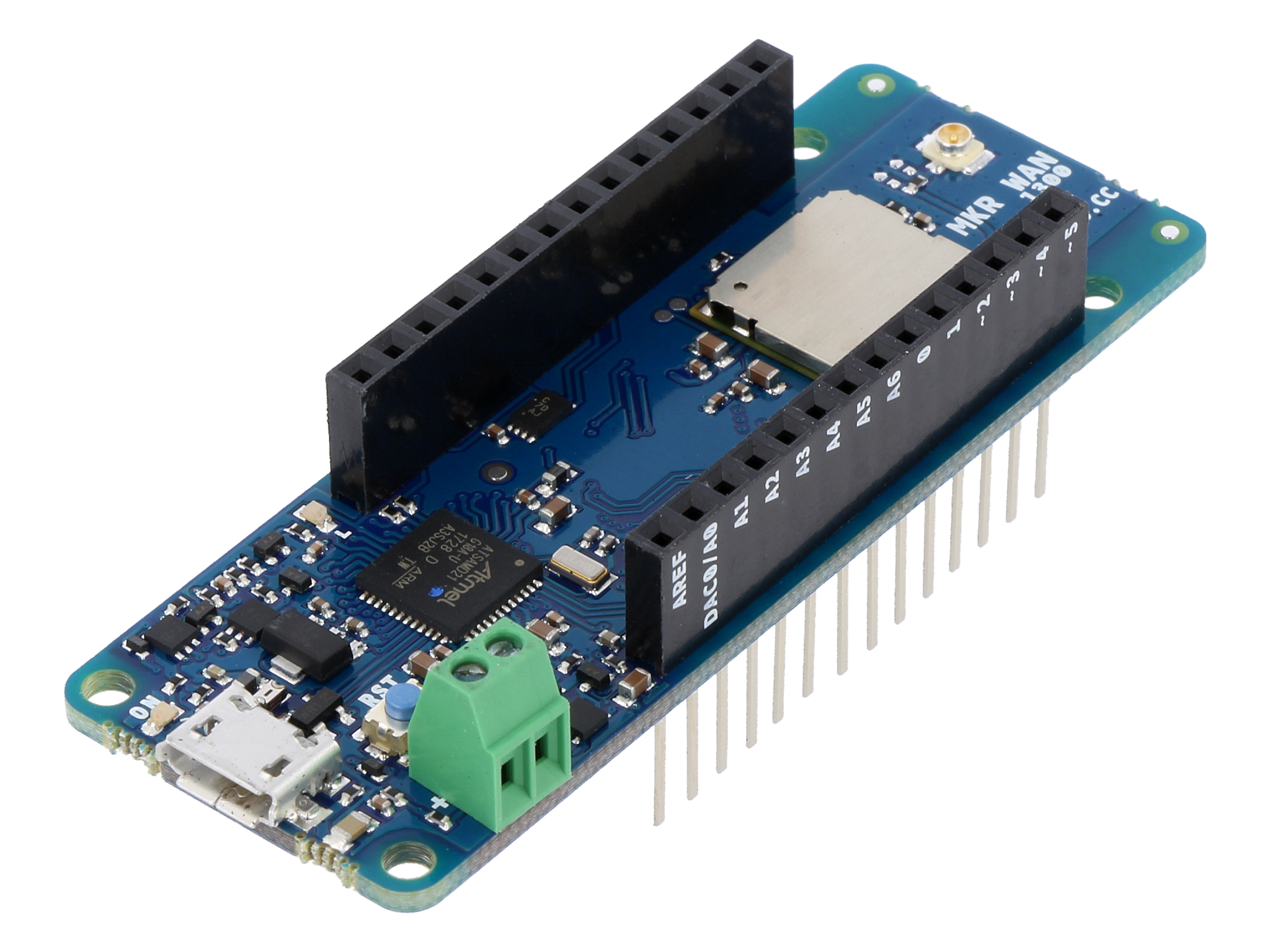
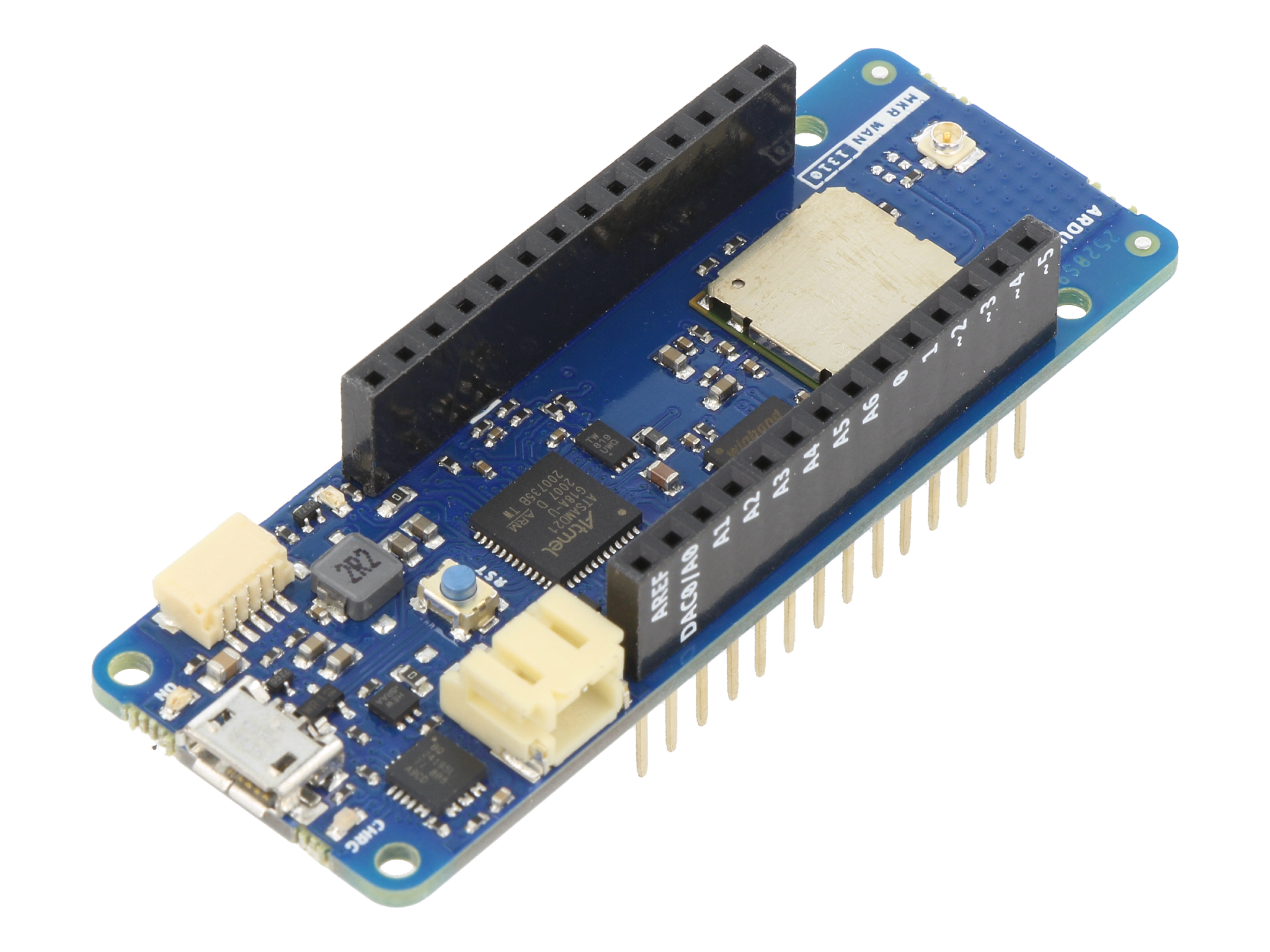
Figures 3 and 4. Arduino MKR WAN 1300 (left) and MKR WAN 1310 (right).
MKR WAN 13x0 modules work with the Arduino IoT Cloud provided by the manufacturer. The complexity of the solutions provided is complemented by the Arduino Pro Gateway LoRa Connectivity optimised for MKR WAN 1310 modules.
An interesting alternative to LoRa/LoRaWAN is the Sigfox standard, which places particular emphasis on communication from nodes to the access gateway. The Arduino MKR FOX 1200 module, based on the Atmel SAMD21 microcontroller, was made available to designers. The Microchip Smart RF ATA8520, tuned to ISM 868 MHz band assigned for Europe, is responsible for radio communication.
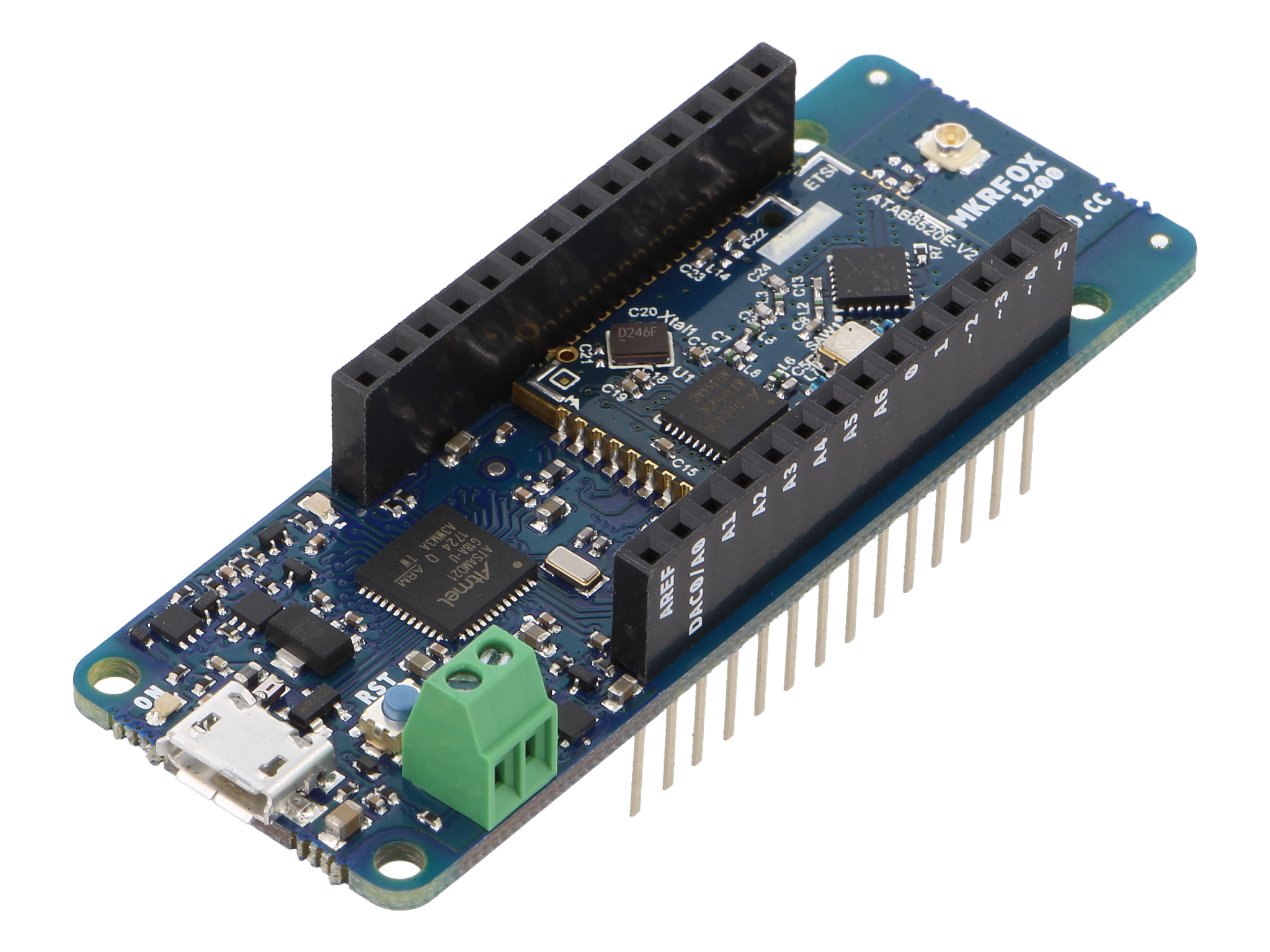
Figure 5. The Arduino MKR FOX 1200 module for communication in Sigfox networks.
GSM/3G communication - Arduino MKR GSM 1400 module
Even an extended mesh network operating in the LoRa/LoRaWAN technologies is currently unable to provide global coverage. In the case of IoT projects requiring almost unlimited communication range, the best solution is to use the GSM/3G standard. Arduino has prepared the MKR GSM 1400 module for GSM/3G communication featuring a SARA-U210 modem from u-blox and a secure authentication module Microchip ECC508 for the implementation of communication security mechanisms. The built-in GSM modem operates in the following frequency bands: GSM 850 MHz, E-GSM 1900 MHz, DCS 1800 MHz, and PCS 1900 MHz.
To improve the process of software development, the manufacturer provides the MKRGSM library (relieving the programmer from operating the module using low-level AT commands), together with a rich set of examples (including GPRS communications, receiving/sending text messages, handling voice calls). The MKR GSM 1400 module can work with both Arduino IoT Cloud software and alternative cloud solutions: Google IoT Cloud, Blynk, or SORACOM Air IoT, for which the manufacturer has prepared a set of example implementations.
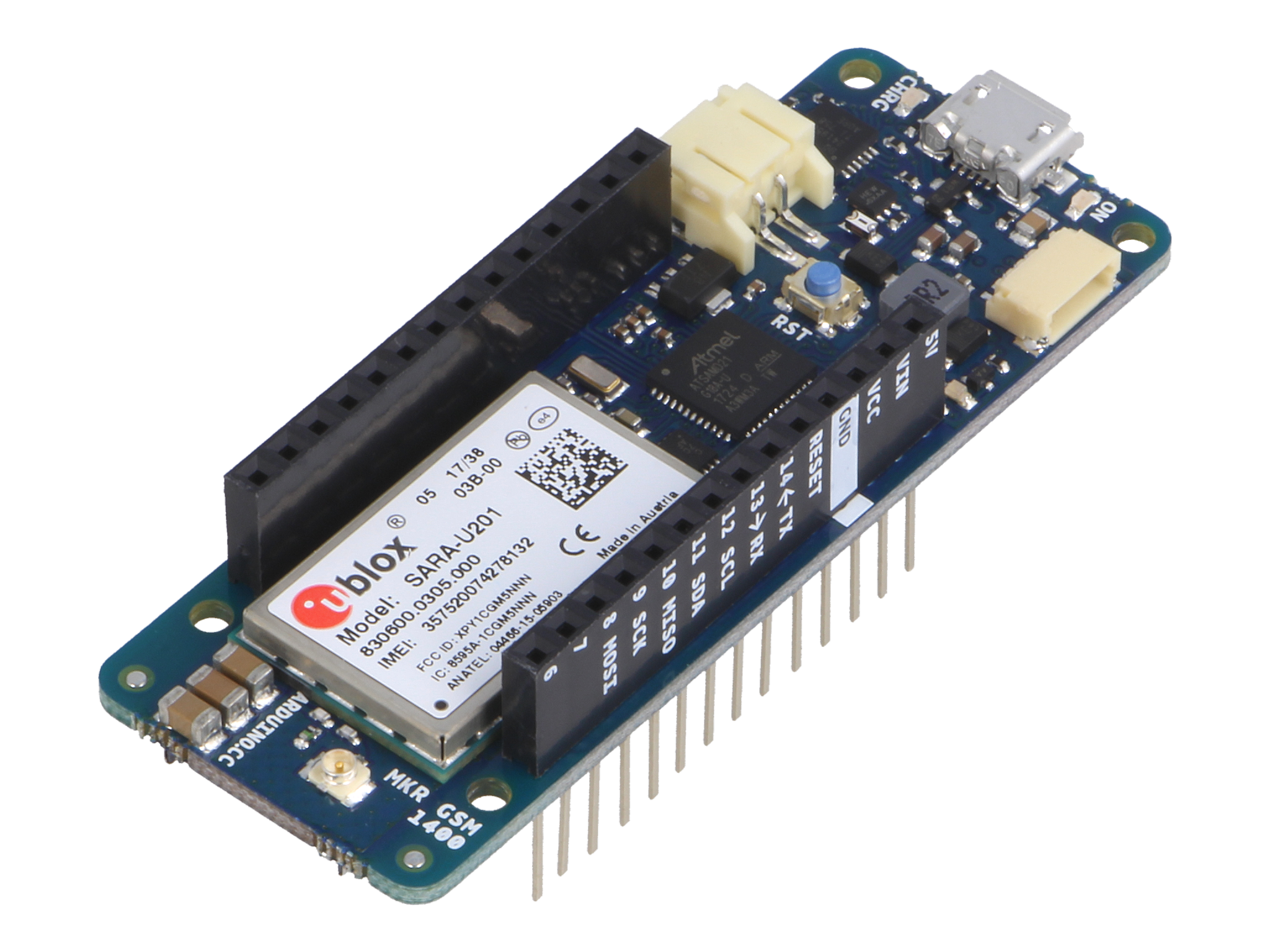
Figure 6. Arduino MKR GSM 1400 module for GSM/3G communication.
Narrowband IoT communication - Arduino MKR NB 1500 module:
When briefly characterising selected communication standards for Internet of Things devices, it is impossible to ignore solutions based on the Narrowband IoT (NB-IoT) standard, which use the licensed LTE 800 MHz band for communication. Similarly to LoRaWAN and Sigfox solutions, NB-IoT belongs to LPWAN networks, thus ensuring stable communication over large areas with the use of energy-saving radio modules that ensure many years of battery operation. Thus, it provides another alternative to LoRaWAN and Sigfox communication in "Smart City" solutions
For rapid prototyping of NB-IoT end nodes, Arduino has prepared the MKR NB 1500 kit, equipped with the u-blox SARA-R410M-02B module, enabling LTE Cat M1/ NB1 connectivity in the following frequency bands 1, 2, 3, 4, 5, 8, 12, 13, 18, 19, 20, 25, 26, and 28. In addition, the MKR NB 1500 kit is equipped with ECC508 Microchip's authentication chip, a Micro SIM card connector, Li-Po battery charge controller and an external antenna connector.
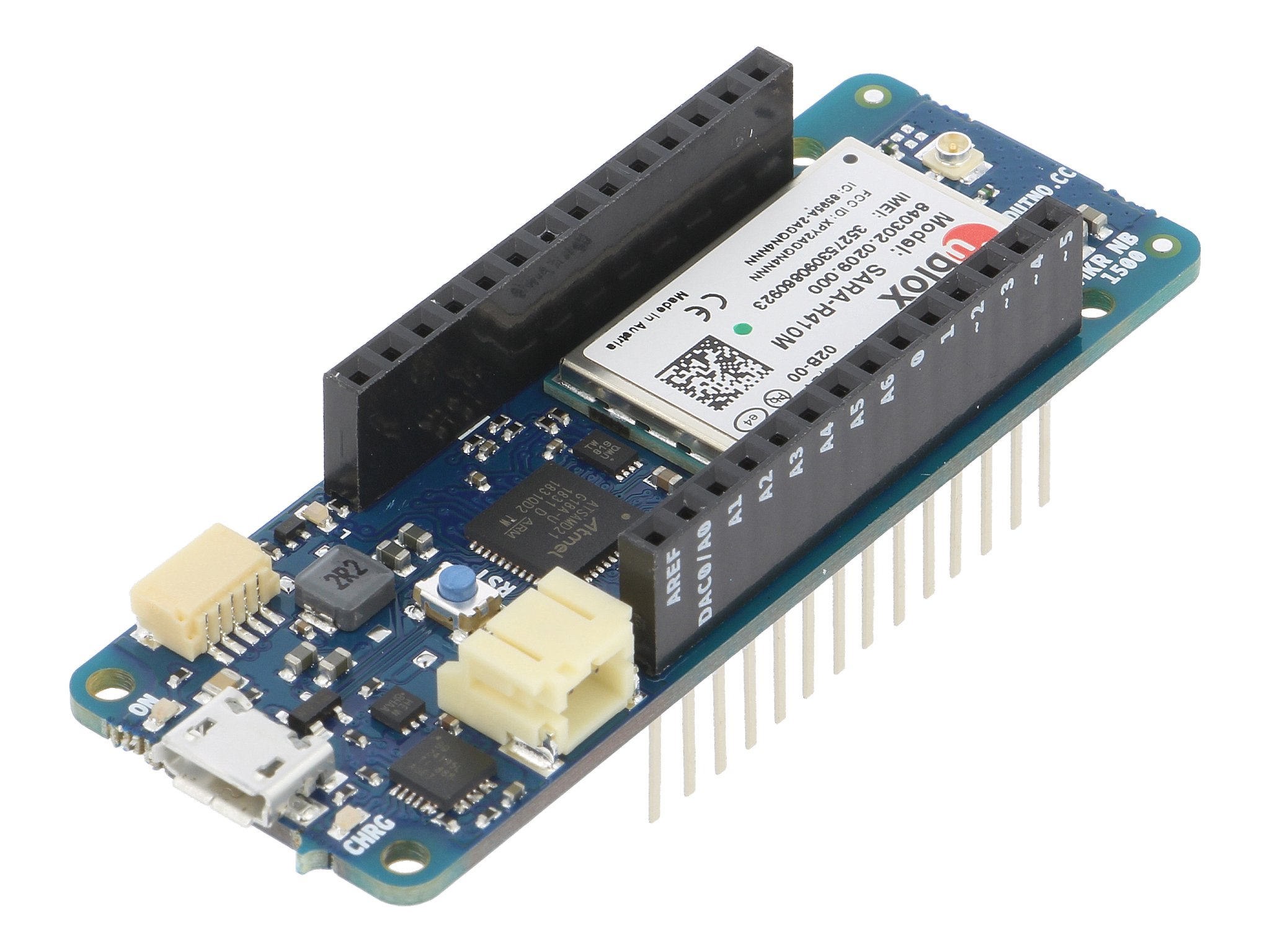
Figure 7. Arduino MKR NB 15 module for narrowband IoT network communication.
Embedded systems and IoT